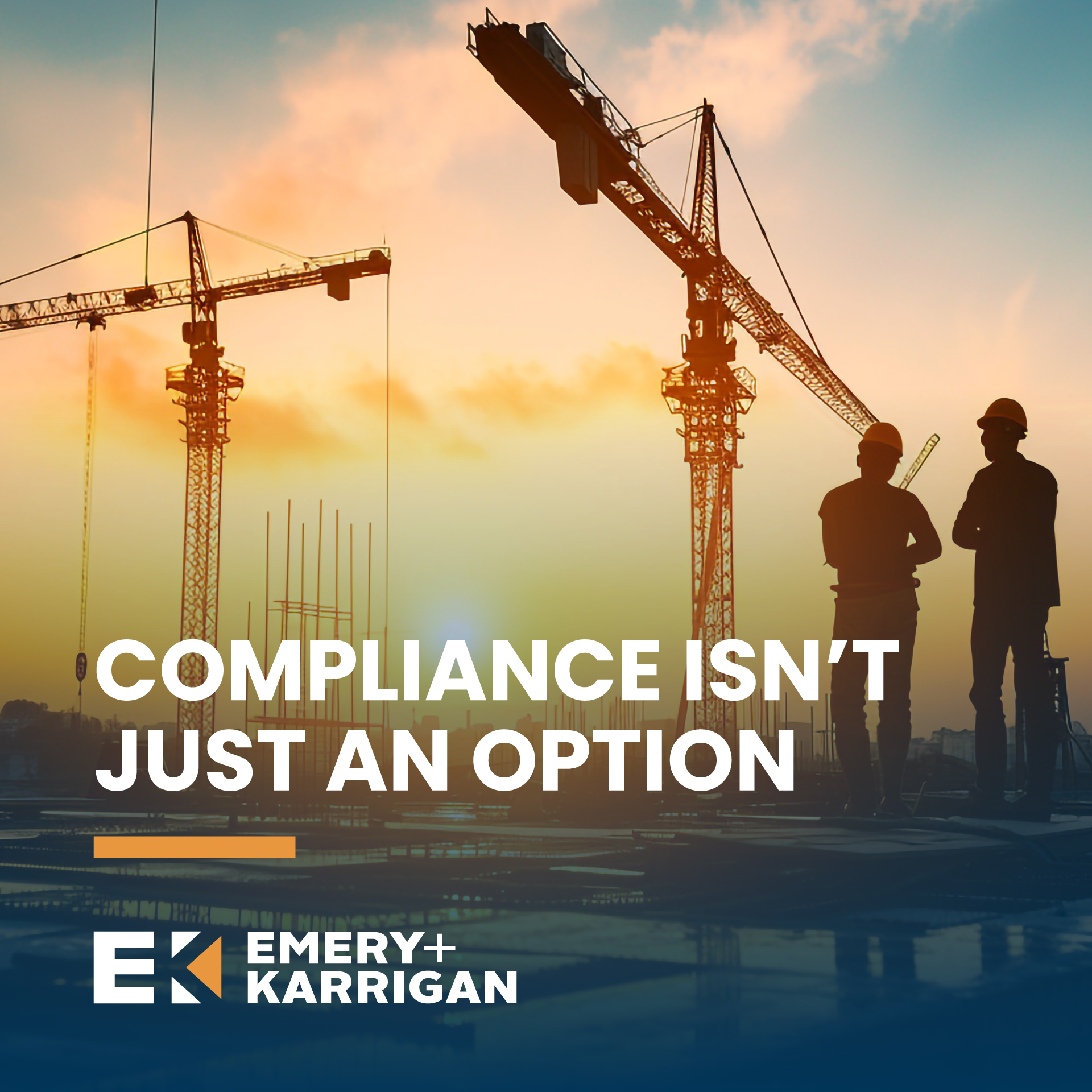
July 16, 2025
Compliance Isn’t Optional: How Poor Risk Management Exposes Specialized Transport Companies to Regulatory Failure
By: Emery & Karrigan, Inc.
Est. Read Time: 2 Min
In specialized transport, one overlooked risk can spiral into a major compliance violation, derailing operations, raising insurance premiums, and triggering lawsuits. For CFOs and operations leaders under pressure to reduce exposure and control costs, robust risk management isn’t just about safety. It’s about staying in business, which is becoming more and more critical in the crane and rigging landscape.
The High Stakes of Poor Risk Management
With evolving DOT, FMCSA, and OSHA regulations, companies that rely on outdated policies or undocumented procedures are playing a dangerous game. In recent years, regulatory scrutiny has intensified, especially regarding:
- Inadequate driver qualification files
- Poorly maintained logs and tracking systems
- Gaps in cargo securement procedures
- Undefined risk transfer provisions in contracts
Each of these gaps represents an opportunity for auditors and plaintiffs’ attorneys to act.
Why CFOs Can’t Ignore This
Your bottom line is directly tied to how well your company manages risk. Non-compliance can mean:
- Six-figure penalties
- Loss of operating authority
- Higher GL and auto liability premiums
- Erosion of customer trust
And with today’s hard market conditions, underwriters are demanding clear documentation, quantifiable controls, and risk mitigation strategies they can trust.
What Good Risk Management Looks Like
At Emery & Karrigan, we help clients put compliance and risk management frameworks in place. That means:
- Contractual alignment: We audit your contract language to ensure risk transfer aligns with your coverage.
- Claims insight: Our team tracks trends and recommends proactive steps to reduce future exposures.
- Risk scoring & benchmarking: Our 60+ question assessment tool allows you to see how your company stacks up and where to improve.
Real Protection Is Proactive
Too many specialized transport companies take a reactive approach and make the mistake of waiting until there’s a claim, a fine, or an audit to get serious about their risk management. And by then, it’s too late. Proactive risk management positions your company as a lower risk to underwriters and a trusted partner to clients. The stakes in this industry are high, which is why having a clean record and demonstrating your commitment to safety sets you leagues apart from your competition.
Establish Emergency Procedures
If something goes wrong, everyone should know:
- Who takes charge?
- Where is the nearest emergency access?
- Who is trained in first aid?
- How is communication handled during a crisis?
Emergency planning is a key component of any OSHA-compliant lift, and can be a major differentiator in how your insurance partner assesses risk.
Takeaways:
Regulatory failure is never just a fluke, it’s a predictable outcome of poor risk practices. With Emery & Karrigan, you gain more than insurance. You gain a risk management partner who understands your business, speaks your language, and helps you stay ahead of the curve. Let’s protect your future before compliance becomes a crisis.
Contact us to help you audit your risk management practices today.
%20(1).png?width=779&height=349&name=image%2033%20(2)%20(1).png)

